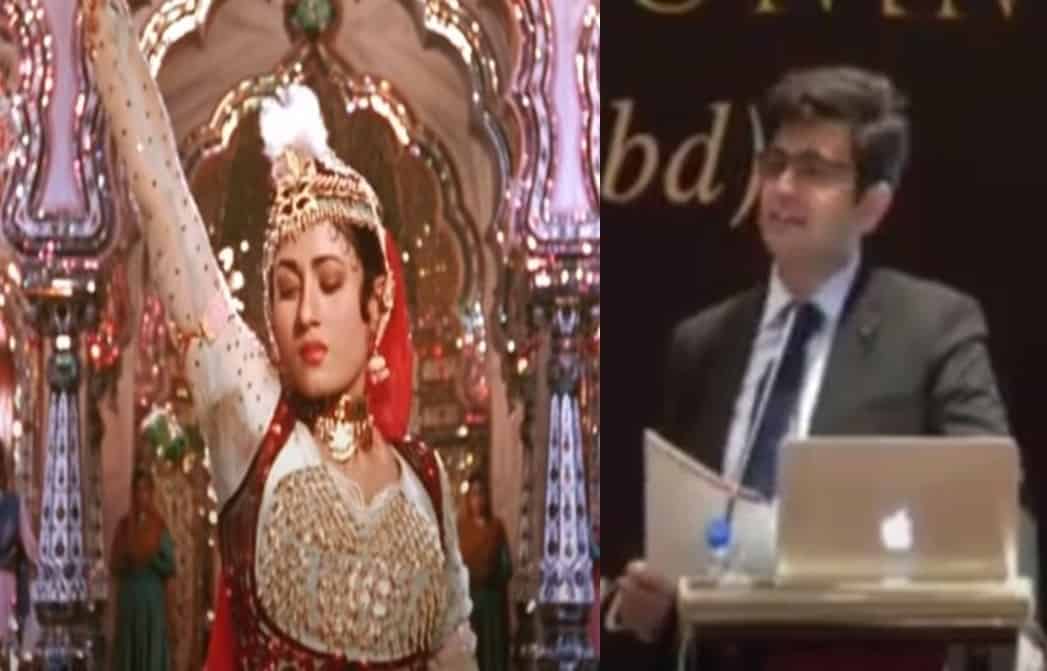Hyderabad: Sonu Sharma-a famous motivational speaker and Youtuber has prepared an article especially for the audience at a talk at Radisson Hotel-Faridabad to explain what is ‘seriousness’. He showed when a man is serious how he builds seriousness.
Mughal-e-Azam
He gives an example of a bygone era film “Mughal-e-Azam” whose director K. Asif was famous for determination, strong willpower, perseverance and strict discipline.
Sharma says, he wants to show, when people become serious in executing their work, they can take their work to greater heights.
Mughal-e-Azam, a film based on Emperor Akbar and his son Prince Saleem who was in love with a slave girl was being shot in Mumbai. But tailors were called from Delhi to stitch the costumes. Specialists were brought from Surat for embroidery. Although these tradesmen were available in Mumbai itself, they were called from other cities. Because, K. Asif did not want to compromise with the work. He wanted finest workmen and specialists for his film to give it a real and grand look. Goldsmiths from Hyderabad made the jewellery. Kholapauri craftsmen designed the crowns worn by the Emperor and other nobles in the film. Ironsmiths from Rajasthan crafted the weapons. So, K. Asif gathered the craftsmen from all over India in one place—this is called a Serious Project.
Prithviraj Kapoor gave 19 shots for one scene
Prithviraj Kapoor had to give 19 shots for one scene, the 19th shot was okayed by K. Asif. He asked Prithviraj Kapoor to increase his weight, or else, he would have to give up his role in the film. Because, K. Asif wanted the image of Emperor Akbar on the silver screen. Prithviraj Kapoor was a great artist and a man of repute during those days. But Asif never cared. This is called ‘seriousness’.
The making of the film was started in 1944 and was released in 1960. It took 16 years for one project. There was no guarantee whether the film would be a success. The limit of seriousness did not end here, the cost of one song ‘pyar kiya to darna kya’ was said to have costed as much as what would had been incurred to make one film during those days. This is called ‘seriousness’.
The song was shot in tricolor, K. Asif wanted to picturize the complete film in tricolor, but the producer disagreed due to the high cost of the film.
Ten million rupees for one song
The song shot in Sheesh Mahal [palace of glass] costed ten million rupees which was a huge amount during that time – ‘seriousness’.
This song pyar kia to darna kya was written 101 times by the poet Shakeel Badayuni. For one hundred times it was rejected. At last, it was accepted by the music director Naushad Ali when presented for the 101st time – ‘seriousness’. He said, ‘K. Asif is not comprising with the best, neither will I’.
In the iconic battle in the film between Akbar and Saleem, 2,000 camels and 4,000 horses and 8,000 troops were used and some soldiers from the Indian army were borrowed – ‘seriousness’. K. Asif was not ready to compromise with anything less.
In the film, the Queen Jodha Bai was seen swaying the cradle with Lord Krishna’s statue. Lord Krishna’s statue was made up of pure gold to give a feeling of grandeur. After the shooting, it was decided to melt away the statue to recover the money as Muslims and Hindus practice these days. But Naushad said ‘no’, although he was a Muslim, he took the gold statue of Lord Krishna to his home and swayed the cradle of Lord Krishna until his last breath.
The song, ‘ay muhabbat zindabad’ was a chorus in which one thousand singers were assigned and one thousand mics were kept in front of them to create an echoing effect, as there was no such sound engineering technology during that time — this is called seriousness.
Sheesh Mahal
Sheesh Mahal took two years to build, the glass was imported from Belgium. The film was released in Maratha Mandir, the theatre had a capacity of 100 seats and one lakh people were gathered outside the theatre, trying their luck to see the movie. The print of the movie was mounted on four elephants just to create a feel.
The film director, K. Asif was so bankrupted that he had to borrow paan and cigarette.
The iron chains in which Madhubala was entangled were made of iron, used just to bring the sign of pain on the heroine’s face.
Sonu Sharma regards this work of K. Asif as ‘seriousness’. He asks the audience whether they are building this kind of seriousness in their business? If yes, then the result would be great, but it may take considerable time and one should have perseverance, will-power and determination as K. Asif.

